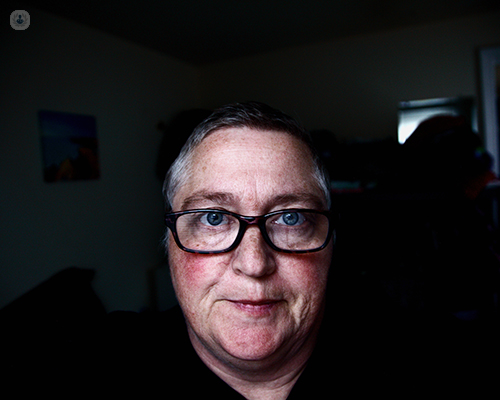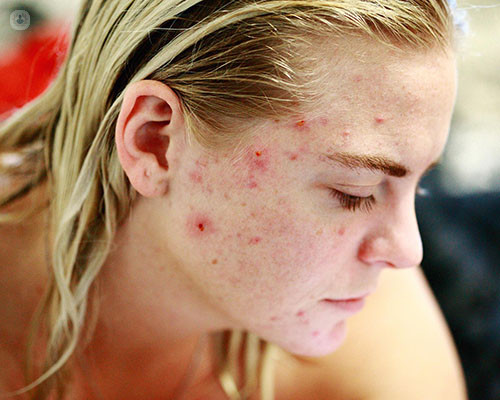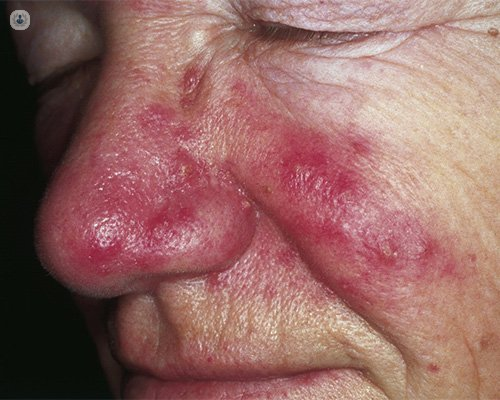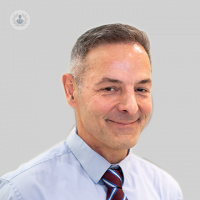An expert's guide to rosacea
Written in association with:Rosacea is a very common skin conditon that causes the face to become red and painful. In our latest article, renowned dermatologist Dr Aleksandar Godic explains everything you need to know about this condition, including its causes, symptoms and treatments.

What is rosacea?
Rosacea is a very common inflammatory skin condition, which is poorly understood. It presents with a variety of signs and symptoms. The most common symptom is a red face. This redness can initially come and go, and later on be more permanent.
Patients also have tendency to flush. The most common trigger is heat, but certain foods such as garlic, spicy foods, citrus, chocolate, and alcohol can also trigger rosacea. Some patients can develop pustules similar to acne spots, affecting the centre of the face.

Certain patients can develop ocular rosacea, which affects eyelids, causes conjunctivitis, or leads to other manifestations in the eye. In certain patients, we see swelling of certain parts of the face, and phymatous rosacea which leads to an expansion of soft tissue. This can cause the formation of clumps and bumps, mainly affecting the nose and to a lesser extent the forehead, earlobes, eyelids or chin.
Patients suffering from rosacea also have a low pain threshold, and a low tolerance to heat and irritants. Many patients complain of having dry and flaky skin associated with general soreness, or a painful, burning sensation in the face.
What does rosacea look like?
Patients suffering from rosacea usually present with a red face. They may also have broken blood vessels on their face, which are called telangiectasis. Rosacea can sometimes also cause pustules to form.
Another characteristic of rosacea is a thinner skin barrier, which means that patients don't tolerate irritants very well. They can find it difficult to find skincare and sun protection products that don’t cause burning or stinging.
Some patients may have rosacea nodules, or phymatous rosacea symptoms. Patients may present with all of these symptoms or just one or two symptoms, there is no rule.
What is the main cause of rosacea?
The main cause of rosacea is unknown. Rosacea is most common in Caucasians, and many rosacea patients have concomitant sun-damaged skin. Whether this sun damage is a cause of rosacea is unknown. We also see rosacea in children, and people with dark skin, but this is less understood.
How do you get rid of rosacea permanently?
Unfortunately, there is no permanent cure for rosacea. We can only help patients to ease their symptoms. We can advise them which products to use, such as sunscreens, and common triggers which they can avoid.

What products should you avoid if you have rosacea?
My simple advice to patients is to avoid any product that causes redness, stinging, burning or itchiness. Unfortunately, there is no one-size-fits-all solution for rosacea, but people suffering from rosacea should always avoid exfoliators and any aggressive skincare products.
Can rosacea go away on its own?
Usually, rosacea does not go away on its own, but it can become very controllable. It may go into remission and stay in remission for a long time.
If you have concerns about rosacea or any other skin condition, please don't hesitate to arrange an appointment with Dr Aleksandar Godic via his Top Doctor profile.


